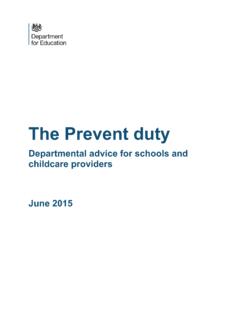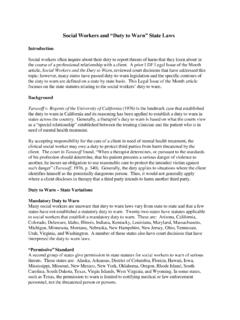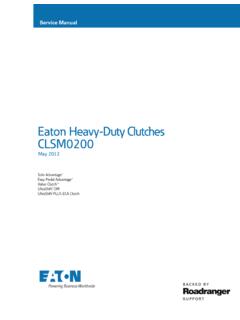Transcription of prevent duty toolkit - GOV.UK
1 prevent duty toolkit for Local Authorities and Partner AgenciesSupplementary Information to the prevent duty Guidance for England and WalesPrevent duty toolkit for Local Authorities and Partner AgenciesSupplementary Information to the prevent duty Guidance for England and WalesIntroduction ..1 Delivery Benchmark ..21 . Local Risk Assessment Process ..32 . Multi-Agency Partnership Board ..53 . prevent Partnership Action Plan ..94 . Referral Process ..115 . Channel Panel ..136 . prevent Problem Solving Process ..167 . Training Programme ..188 . Venue Hire and IT Policies ..239 . Community and Civil Society Engagement ..2710 . Communications ..30 Accessing Support ..33 Further information ..34 Local Authority Partnership Self-Assessment Tool.
2 35 ContentsPrevent duty toolkit for Local Authorities and Local Authority Partners 1 The prevent duty under the Counter-Terrorism and Security Act 2015 requires all specified authorities to have due regard to the need to prevent people from being drawn into terrorism ; local authorities and their partners therefore have a core role to play in countering terrorism at a local level and helping to safeguard individuals at risk of radicalisation .This toolkit is designed to provide practical information and examples of best practice to support local authorities and their partners in their work to protect vulnerable people from radicalisation . It supplements the prevent duty Guidance: for England and Wales1, published in March 2015 and will assist in the consideration of existing statutory guidance.
3 Home Office support for the implementation of prevent is listed at the end of this document, on page 34 .1 duty toolkit for Local Authorities and Local Authority Partners 2 The following benchmark has been designed to enable local authorities and their partners to assess prevent delivery in their local area against statutory requirements and best practice delivery . This is not an exhaustive list, but provides a benchmark for effective prevent delivery . All areas are expected to have prevent plans in place proportionate to the local risk, and as such local delivery plans in areas with the greatest risk may surpass delivery outlined in the benchmark to mitigate specific local self-assessment tool on page 36 has been based on this benchmark.
4 It is intended that local authorities and their partners will utilise the tool to assess prevent delivery, identifying areas of strengths and weaknesses, before using the wider toolkit to identify information and examples of good practice to develop local delivery .Corresponding sections of the self-assessment tool are provided throughout the following chapters, to enable consideration of practical delivery alongside information provided .1 .The organisation has a local risk assessment process reviewed against the Counter Terrorism Local .There is an effective multi-agency partnership board in place to oversee prevent delivery in the area .3 .The area has an agreed prevent Partnership Plan .4 .There is an agreed process in place for the referral of those identified as being at risk of radicalisation.
5 5 .There is a Channel Panel in place, meeting monthly, with representation from all relevant sectors .6 .There is a prevent problem solving process in place to disrupt radicalising .There is a training programme in place for relevant personnel .8 .There is a venue hire policy in place, to ensure that premises are not used by radicalising influencers, and an effective IT policy in place to prevent the access of extremist materials by users of networks .9 .There is engagement with a range of communities and civil society groups, both faith-based and secular, to encourage an open and transparent dialogue on the prevent duty .10 .There is a communications plan in place to proactively communicate and increase transparency of the reality / impact of prevent work, and support frontline staff and communities to understand what prevent looks like in practice.
6 Delivery BenchmarkPrevent duty toolkit for Local Authorities and Local Authority Partners 3 Benchmark1. The organisation has a local risk assessment process reviewed against the Counter Terrorism Local organisation understands local risk and this informs planning and delivery of compliance1 .1 Is there a local risk assessment process which informs an action plan and is disseminated to partners?Good Practice Activity1 .2 Do officers responsible for delivering prevent work proactively alongside their police colleagues to develop local CTLPs?Good Practice Activity1 .3 Are CTLP findings disseminated at relevant levels?The prevent duty requires all local authorities to utilise the local Counter Terrorism Local Profile (CTLP) to inform a robust assessment of the risks of radicalisation in the local area, and produce a proportionate partnership action plan to tackle these risks.
7 Contributing to the CTLPL ocal authorities are a key partner in countering terrorism at a local level . Therefore while the CTLP is produced by the police, it is imperative that local authorities, and their partners, contribute to it .Local authorities should play a central role in ensuring that local partners are able to contribute relevant information and data to the CTLP .Information provided by local authorities and their partners should highlight any current and emerging themes or vulnerabilities in local radicalisation and extremism, and indicate whether the threats, risks and vulnerabilities have changed or remained the same .Assessing riskThe CTLP should be an OFFICIAL SENSITIVE / RESTRICTED document . The minimum security clearance required for access to OFFICIAL SENSITIVE / RESTRICTED information is Baseline Personnel Security Standard (BPSS).
8 However, the CTLP should include recommendations for activity against risks which should be shared among all appropriate partners .1. Local Risk Assessment ProcessPrevent duty toolkit for Local Authorities and Local Authority Partners 4 These recommendations should be fed into:1. A local typically includes: An assessment of the threat; including the presence and nature of people, groups, communities and places that may be exploited by radicalisers . An assessment of the risk; including the probability that radicalisation may take place and the harm it may cause .In developing a risk assessment, partners should: Ensure it is informed by an understanding of the factors for radicalisation as detailed in the prevent strategy2 . Consider individuals who have returned from the theatre of conflict.
9 Regularly review it against emerging national and local information, emerging analysis and CTLP updates . Ensure that decision-makers, including elected members, are appropriately briefed on it .2. A strategic partnership action or delivery plan. Further information in section 3 .Disseminating CTLP findingsThe CTLP is an annual product which should be based on the regular exchange of relevant information . This includes stakeholders disseminating appropriately within their organisations, as well as sharing information with other stakeholders, to be captured in the CTLP .It is vital that information in the CTLP is shared among relevant stakeholders . The chief executive of the local authority should expect formal briefing from the police or Counter-Terrorism unit, and the prevent Partnership board (or equivalent) should receive briefing on the key elements of the CTLP; in particular the local recommendations.
10 Elected members in leadership roles should also receive a briefing of the key elements of the authorities may seek to work with the CTU to find means of briefing a broader set of stakeholders at an OFFICIAL level, with particularly sensitive elements removed from the briefing but the key findings highlighted to duty toolkit for Local Authorities and Local Authority Partners 5 Benchmark2. There is an effective multi-agency partnership board in place to oversee prevent delivery in the organisation leads a partnership of multi-agency stakeholders which ensures a collaborative approach to prevent of Compliance2 .1 Is there a multi-agency partnership board in place which oversees prevent delivery in the area?Expectation of Compliance2.

















